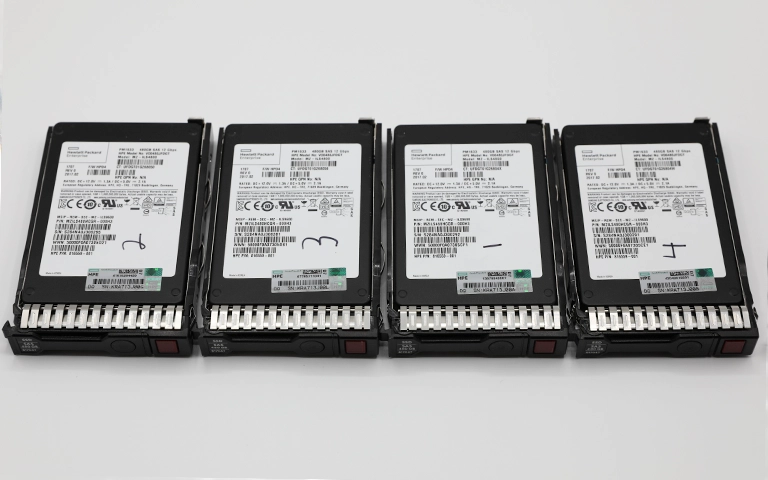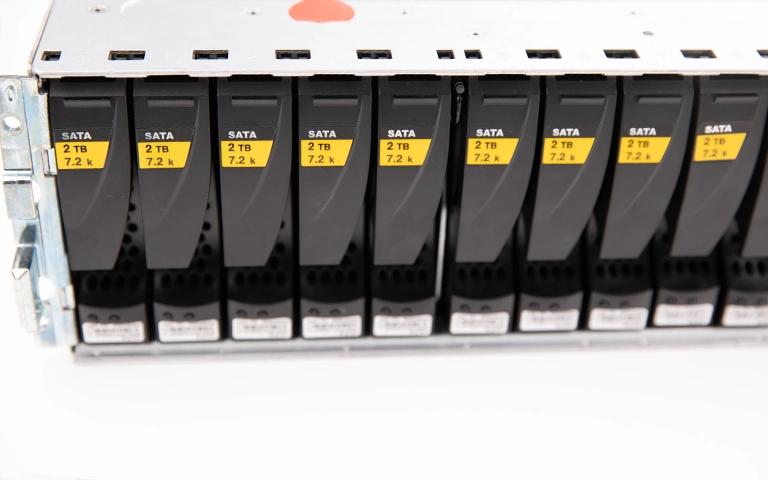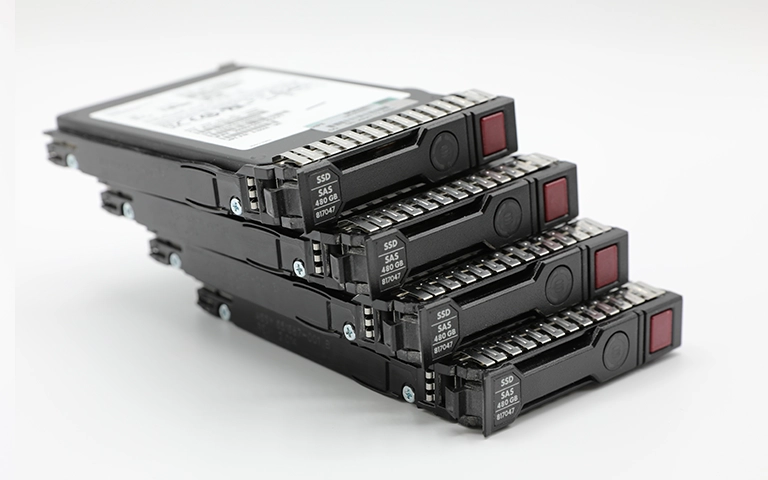When storing and managing important data, a Network Attached Storage (NAS) device offers a convenient and centralized solution. Whether used for business operations or personal backups, NAS systems make it easy to access files across multiple devices on a network.
However, data reliability and performance depend heavily on how the drives inside the NAS are configured. This is where RAID (Redundant Array of Independent Disks) plays a key role. It combines multiple drives to balance speed, capacity, and fault tolerance.
Choosing the right RAID setup can make the difference between seamless operation and unexpected downtime.
In this guide, you will learn how RAID works in NAS systems, the strengths of different RAID levels, and how to select the most reliable configuration for your needs. You will also discover what happens when a NAS RAID fails and how RAID Recovery Services can help restore your data securely and efficiently.

Understanding RAID in NAS Systems
RAID stands for Redundant Array of Independent Disks. It is a storage technology that combines several physical drives into a single logical unit to improve reliability, performance, or both. In a NAS setup, RAID distributes data across multiple disks in specific patterns depending on the chosen RAID level.
The main purpose of using RAID in NAS devices is to protect data against drive failures while maintaining steady access speeds. When one drive fails, the system can rebuild missing data using information stored on the remaining drives. This redundancy is what makes RAID essential for network storage used in offices, creative studios, or home environments.
NAS systems often allow you to choose between multiple RAID levels, each offering different balances of speed, capacity, and protection. Understanding how these levels work helps you decide which one suits your storage goals best. To explore more about RAID options for NAS, you can check our guide on NAS RAID options.
Common RAID Levels Used in NAS
NAS systems support several RAID levels, each offering a different balance between performance, capacity, and protection. Below are the most common configurations you will encounter when setting up a NAS.
RAID 0 stripes data across multiple drives, which improves read and write speeds. However, it does not provide any fault tolerance. If one drive fails, all data is lost. This setup is suitable only for temporary or non-critical data storage.
RAID 1 stores an identical copy of data on two or more drives. This configuration offers excellent redundancy but cuts available storage in half. It is ideal for users who prioritize data protection over capacity.
RAID 5 uses block-level striping with distributed parity. It provides good read performance and efficient storage utilization. RAID 5 is a popular choice for small businesses and personal NAS setups. Learn more about its reliability in our detailed comparison RAID 5 vs RAID 6.
RAID 6 is similar to RAID 5 but stores two parity blocks instead of one. It can withstand the failure of two drives at the same time, offering higher fault tolerance. It is often used in enterprise environments where uptime is crucial.
RAID 10 (also known as 1+0) mirrors and stripes data across multiple drives. It provides both fast performance and strong data protection. This setup is ideal for users managing large workloads or critical business data.
To learn about other RAID structures and how they differ, you can explore our overview of types of RAID.

Comparing RAID Levels for NAS Performance
Selecting the right RAID level requires understanding how each setup affects redundancy, performance, and storage efficiency. The table below summarizes the key differences between the most common RAID configurations for NAS systems.
If you are comparing simpler disk arrangements, see our guide on JBOD vs RAID to learn how basic disk pooling differs from structured RAID arrays.
Factors to Consider Before Choosing a RAID Setup
Before selecting a RAID level for your NAS, it is important to understand your storage goals and technical limits. The right choice depends on how you plan to use the system and what you value most, performance, capacity, or protection.
Storage Capacity Requirements: Estimate how much data you need to store now and in the future. Some RAID levels, like RAID 1 or RAID 10, reduce available capacity due to mirroring.
Number of Drives Available: RAID 5 and RAID 6 require a minimum of three and four drives respectively. Your available hardware often determines which configuration you can use.
Performance Needs: If your NAS handles large files or video editing, performance-oriented setups like RAID 0 or RAID 10 are more suitable. For general file storage, RAID 5 or RAID 6 offer a better balance.
Data Protection Priority: If your data is critical, choose a setup with strong redundancy. RAID 1, RAID 6, or RAID 10 ensure that drive failures do not result in data loss.
Budget and Scalability: More drives and higher redundancy mean greater cost. Consider how easily you can expand your array as your data grows.
To better understand how controller types affect performance, you can review our post on software RAID vs hardware RAID.

What Happens When RAID Fails in NAS
Even with redundancy, no RAID configuration is completely immune to failure. NAS RAID systems can experience data loss due to drive degradation, controller malfunction, or incorrect rebuild attempts. When one or more drives fail, the array may become inaccessible or display missing volumes.
In many cases, users try to rebuild the array or replace drives without first securing the existing data. This can worsen the situation, leading to overwritten parity information or permanent data loss. Understanding how RAID works helps prevent these costly mistakes, but recovery often requires professional expertise.
At RAID Recovery Services, we specialize in restoring data from failed NAS arrays of all types, including RAID 5, RAID 6, and RAID 10. Our engineers handle each drive in controlled lab conditions to ensure safe recovery without further risk to your files.
For a closer look at possible NAS issues and recovery approaches, visit our detailed article on NAS failure and recovery or read about potential RAID rebuild data loss risks.
Fast turnaround times for business-critical data
Choosing the Best RAID for Your NAS
Selecting the best RAID configuration depends on what you value most in your NAS — speed, redundancy, or capacity. For users focused on performance, RAID 10 offers both speed and protection. Small businesses often choose RAID 5 for its balance between efficiency and fault tolerance, while enterprise users prefer RAID 6 for its ability to withstand multiple drive failures.
There is no universal solution that fits every setup. The ideal RAID level for your NAS depends on your storage needs, workload type, and long-term reliability goals. Taking the time to plan your configuration can help you prevent unexpected data loss and ensure consistent performance.
If your NAS RAID system has already failed or is showing warning signs, it is best to seek expert help immediately.
RAID Recovery Services provides professional data recovery for all NAS brands and RAID configurations. Our engineers can diagnose the problem, secure your data, and restore access quickly and safely.

Trust the experts with proven results
Frequently Asked Questions
What is the best RAID level for a NAS device?
The best RAID level depends on your priorities. RAID 5 is often chosen for small to medium businesses because it offers a balance between speed, capacity, and data protection. RAID 6 or RAID 10 is better for high-performance or enterprise setups that require stronger fault tolerance.
Can I use RAID 0 for my NAS?
RAID 0 provides excellent performance but no redundancy. If one drive fails, all data is lost. It can be used for temporary or non-critical storage but is not recommended for important data.
What happens when a NAS RAID fails?
When a NAS RAID fails, it can result in inaccessible volumes, corrupted data, or complete array loss. Causes include drive failure, power surges, or rebuild errors. In such cases, professional recovery from RAID Recovery Services is the safest solution.
Can I mix drives of different sizes in a NAS RAID?
Most RAID configurations allow mixed drive sizes, but storage capacity is limited by the smallest drive in the array. For consistent performance and reliability, it is best to use identical drives.
How can I prevent RAID failure in a NAS?
Monitor drive health regularly, replace failing disks promptly, and keep backups separate from the NAS system. Avoid rebuilding the array without expert guidance if a drive fails, as improper actions can lead to permanent data loss.